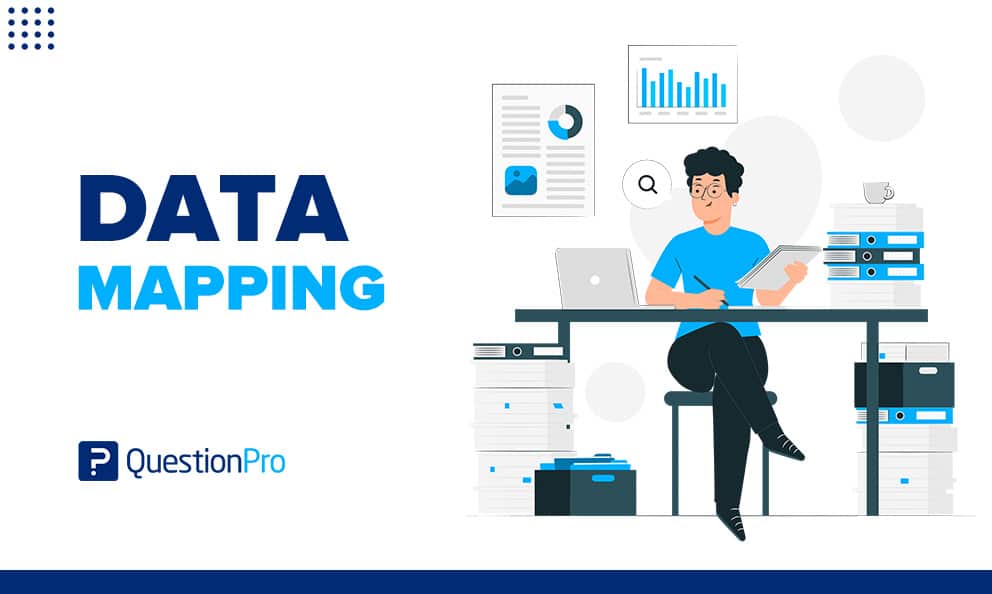
In data mapping, data consists of information and data collected for reference or study in technology. Data analysis may provide you with useful insights. Almost every company uses data-driven insights to expand its operations. However, for every Data Analysis to produce reliable findings, it is critical to verify that the data is correctly migrated and mapped. That’s where Data Mapping is significant.
Definition of Data Mapping
Data mapping is the process of integrating fields from many datasets into a design, or centralized database. This is necessary to transfer, consume, process, and manage data. Its ultimate purpose is to combine many sets of data into a unique one.
Various data sets with different ways of identifying comparable points can be joined in such a way that makes data accurate and usable at the ultimate destination, which is known as data mapping.
In data management, a popular business trading technique is data mapping. However, as the amount of data and the variety of systems that use it have grown, this process has gotten more involved, necessitating the use of automated and powerful technologies.
LEARN ABOUT: Customer data management
We’ll look at a few databases that potentially benefit from the idea. When you integrate databases into a particular record in this, you may query a database server to get information on each. This is beneficial to organizations because it gives them a complete picture of their data assets.
The building of a field map that explains and connects fields that should connect is usually required when connecting databases. It describes how to process the information from each entry, what kind it is, or what should be done if duplicates or other issues arise.
Data mapping advantages
With 2.7 million members and 430 locations across Italy, Coop Alleanza 3.0 is Europe’s major consumer cooperative. The firm, which was formed via the merging of five smaller Italian cooperatives, attempted to combine customer, product, and sales data to provide a 360-degree view of its customers without jeopardizing its GDPR compliance obligations (Personally Identifiable Information).
The organization has been able to discover and manage customer data across numerous internal and external systems, preserving Personally Identifiable Information (PII) while using it safely and with reduced risk exposure to tailor customer experience thanks to the use of Informatica MDM.
Data mapping is essential for data management
There are several applications for data mapping, and it has no underlying end objective. Rather, it is indeed the initial stage of doing several data-related tasks, such as:
Storage of information
A data warehouse is used to consolidate data into one location for research or other purposes. The data arrives from the warehouse when you run an inquiry, a report, or undertake an analysis. Data has been moved, integrated, and converted in the warehouse. When data enters the warehouse, it guarantees that it arrives at its intended destination.
Migration of data
Data migration is the one-time process of migrating data from one place to another. This is generally data that remains constant over time. The destination becomes the viable source of data migration after the transfer, and the previous source is decommissioned. Data mapping enables the migration process by mapping source data to destination fields.
Integration of data
Data integration is the process of transferring data from one place to another regularly. The integration might be done regularly, such as periodically or monthly, or it can be prompted by a specific occurrence. Both the origin and the destination store and retain data. It’s for integrations, such as data migration, connecting origin fields with target fields.
Transformation of data
Data transformation is the process of converting information from one place to another. This might involve altering data types, eliminating null values or duplication, aggregating data, enriching data, or doing other transformations. To match the target format, “Illinois” can be converted to “IL.” The data map contains these transformation formulae. As data is sent, the data map uses transformation algorithms to change it into the appropriate format for data analysis.
How do you map data?
- Define the data to be transferred, including the tables, fields inside each table, and the field’s format once it’s been moved. The regularity of data transmission is also specified for customer data integration.
- Compare the source and destination fields.
- The transforming technique or rule is coded if a field requires transformation.
- Run the transfer on a test system using a sample of data from the source to observe how it performs and make any required revisions.
- Arrange a migration or integration event once the data transformation is performing as expected.
- A data map is a live object that will require upgrades and adjustments when new data sources are included, data sources evolve, or demands at the destinations change.
Conclusion
In data mapping, data consists of information and data collected for reference or study in technology. Data mapping enables the migration of data from one place to another in a real-time, efficient, and cost-effective manner. It also helps preserve Personally Identifiable Information (PII) while using it safely and with reduced risk exposure.
At QuestionPro, we offer researchers of all kinds not only data collection tools like our survey software but also insight repositories for long-term research of all kinds.
If you are interested in having a demo or reading more about it, we invite you to visit the Insight Hub to learn more about this amazing product.







